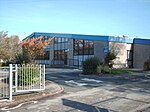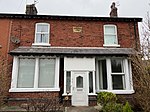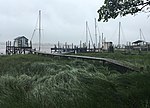Wyre Estuary Country Park
1991 establishments in EnglandCountry parks in LancashireGeography of the Borough of WyreTourist attractions in the Borough of Wyre

Wyre Estuary Country Park is located in Thornton-Cleveleys, Lancashire, England. Established in 1991 and covering 0.79 acres (0.32 ha), it is situated on the western banks of the 28 miles (45 km) long River Wyre, near its mouth at the Irish Sea at Fleetwood. The Wyre estuary forms part of the southern boundary of Morecambe Bay. From the park's car park, Fleetwood can be viewed to the north, and there are also vistas across the river to South Lakeland to the northeast, Over Wyre to the east and, beyond, the Bowland Fells.It has received a Green Flag Award and a VisitEngland Award.The park is a starting point on the Wyre Way.
Excerpt from the Wikipedia article Wyre Estuary Country Park (License: CC BY-SA 3.0, Authors, Images).Wyre Estuary Country Park
River Road, Borough of Wyre Stanah
Geographical coordinates (GPS) Address Nearby Places Show on map
Geographical coordinates (GPS)
| Latitude | Longitude |
|---|---|
| N 53.8799 ° | E -2.9796 ° |
Address
River Road
FY5 5FA Borough of Wyre, Stanah
England, United Kingdom
Open on Google Maps









